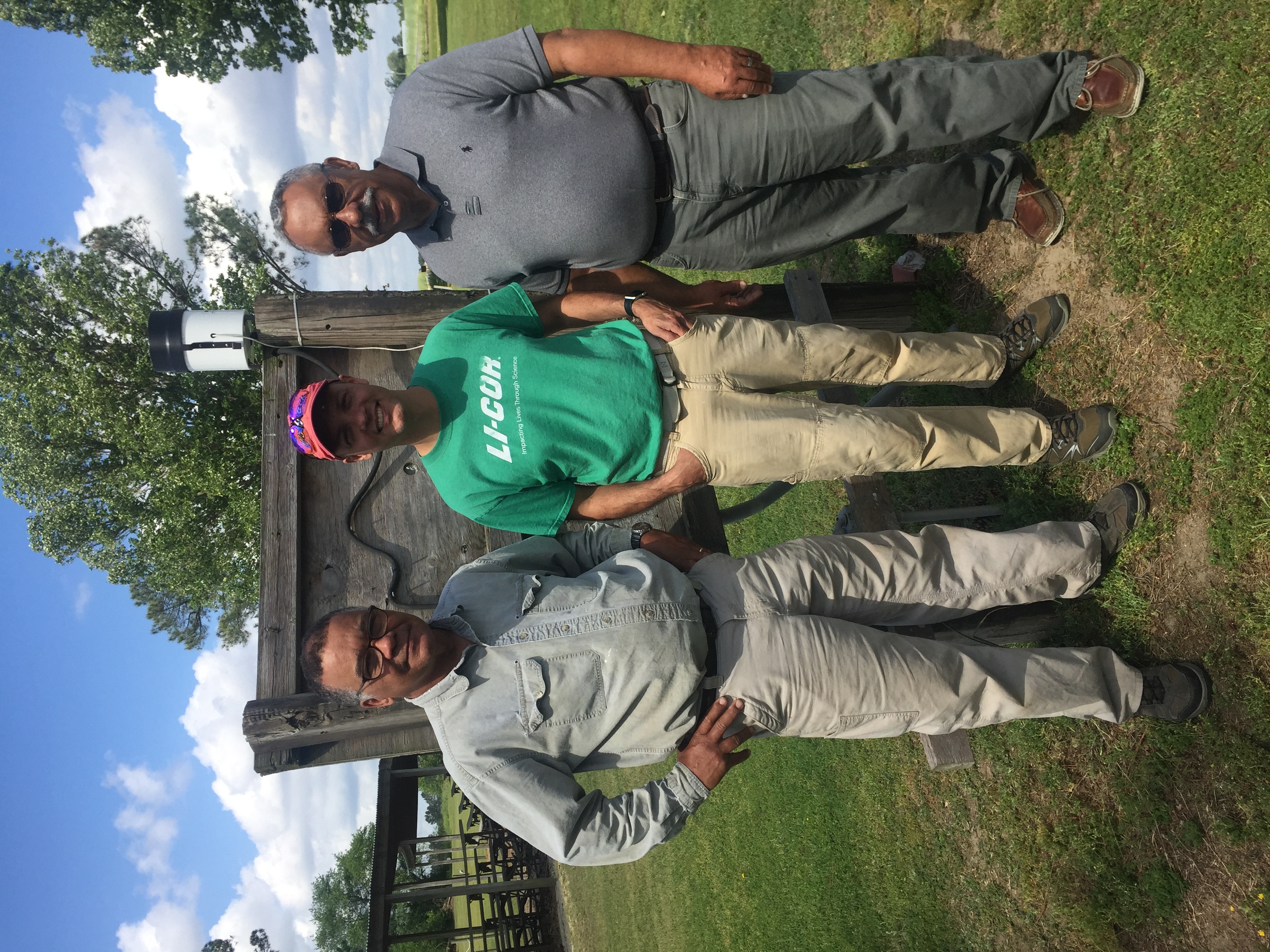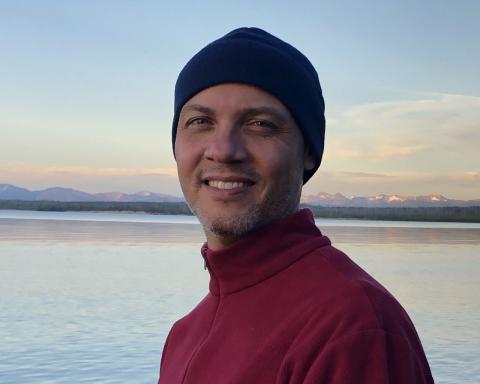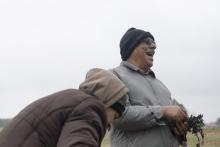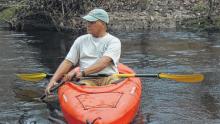The Coharie Tribe is working to restore access to the Great Coharie River for fishing, recreation, and cultural activities. This presentation discusses water monitoring and technical consulting in support of those tribally-led efforts.

The Presenters at the Coharie Tribal Center
 Dr. Ryan E. Emanuel is a Professor at North Carolina State University in the Department of Forestry and Environmental Resources. His areas of expertise are hydrology, environmental sciences, and coastal science and his research interests include ecohydrology, watershed hydrology, watershed biogeochemistry, secondary ecosystem succession, land-atmosphere interaction, and coastal science.
Dr. Ryan E. Emanuel is a Professor at North Carolina State University in the Department of Forestry and Environmental Resources. His areas of expertise are hydrology, environmental sciences, and coastal science and his research interests include ecohydrology, watershed hydrology, watershed biogeochemistry, secondary ecosystem succession, land-atmosphere interaction, and coastal science.
 Greg Jacobs is a Tribal Administrator, Elder, and Visionary Leader of the Coharie Tribe. He is a graduate of the NC Native Leadership Institute and is a board member of the United Tribes of North Carolina. Mr. Jacobs was named “Elder of the Year” by the North Carolina Native American Youth Organization.
Greg Jacobs is a Tribal Administrator, Elder, and Visionary Leader of the Coharie Tribe. He is a graduate of the NC Native Leadership Institute and is a board member of the United Tribes of North Carolina. Mr. Jacobs was named “Elder of the Year” by the North Carolina Native American Youth Organization.
 Phillip Bell is the Coordinator of the Great Coharie River Initiative and a member of the Coharie Tribe. He worked for thirty four years at the US Department of Agriculture.
Phillip Bell is the Coordinator of the Great Coharie River Initiative and a member of the Coharie Tribe. He worked for thirty four years at the US Department of Agriculture.
Reawakening and Restoring Cultural Connections to Water: The Great Coharie River Initiative
Ryan Emanuel1, Greg Jacobs2, Philip Bell2
The Coharie Tribe occupies its ancestral homelands in eastern North Carolina. Today, Coharie communities are located mainly within the watershed of their namesake river in North Carolina’s Sampson County. The Great Coharie River, described on some maps as Great Coharie Creek, flows entirely through sandy Coastal Plain sediments on its way to the Cape Fear River and, eventually, to the Atlantic Ocean. The river is a blackwater stream; its water is the color of rich tea, a byproduct of the organic-rich wetland soils that surround the stream. The water gains its dark color as it steeps in decaying leaves and other organic matter in the soils of swamp forests that flank the entire length of the river.
Colonial records identify specific ancestors of Coharie people who lived along the Great Coharie River and its tributaries prior to the founding of the United States. Coharie people themselves have oral traditions that place them in the Coastal Plain since time immemorial. Their ancestors include Native people who survived the initial waves of European colonization that swept across North Carolina’s Coastal Plain in the early 18th century. Coharie people maintained their collective identity as a Native American community despite the violence of early colonialism and the institutionalized discrimination that followed during the 19th and 20th centuries.
Coharie people have always held strong ties to the river with which they share a name. The river channel and wide floodplain forests hold fish and game. Uplands situated between the branches of the river host fertile farmland. Sand bars and beaches along the river are gathering places for worship or for recreation. Together, the river, its attendant wetlands, and the interstitial uplands formed a landscape that sustained Coharie communities for generations.
In recent decades, the Great Coharie River has suffered from poor water quality, habitat degradation and loss, and other environmental changes that diminished the ability of Coharie people to maintain a relationship with the river. Invasive plants and disturbances from extreme, hurricane-related floods feature prominently among concerns within Coharie communities.
Today, Coharie people are organized politically as a tribe that is recognized by the state of North Carolina but not by the federal government. The tribe’s recognition status limits the collective participation of Coharie people in decision-making around land use, environmental protection, wildlife management, and more. As a result, decades of environmental laws, policies, and management frameworks have been applied to the Great Coharie River without considering the values and perspectives of the river’s original people.
Several years ago, members of the Coharie Tribe began to work around the limitations of their recognition status and reconnect with the river on their own terms. Volunteers from the tribe began to clear out long-neglected reaches so that canoes and kayaks could navigate parts of the river with historic significance to the tribe. The effort grew into a larger, community-wide initiative to care for and re-establish historic connections to the Great Coharie River and its watershed. Recently, the tribe has begun to monitor water quality and track flow levels of the river. This collective work is the Great Coharie River Initiative.
The accompanying video recounts the historic and present-day connections between Coharie people and their river. It is a curated conversation with Coharie elders that explains the origins of the Great Coharie River Initiative and discusses plans for the future. The story illustrates one of many ways in which Indigenous peoples may exercise sovereignty to benefit land, water, and people.
[1] North Carolina State University and National Humanities Center
[2] Coharie Tribe